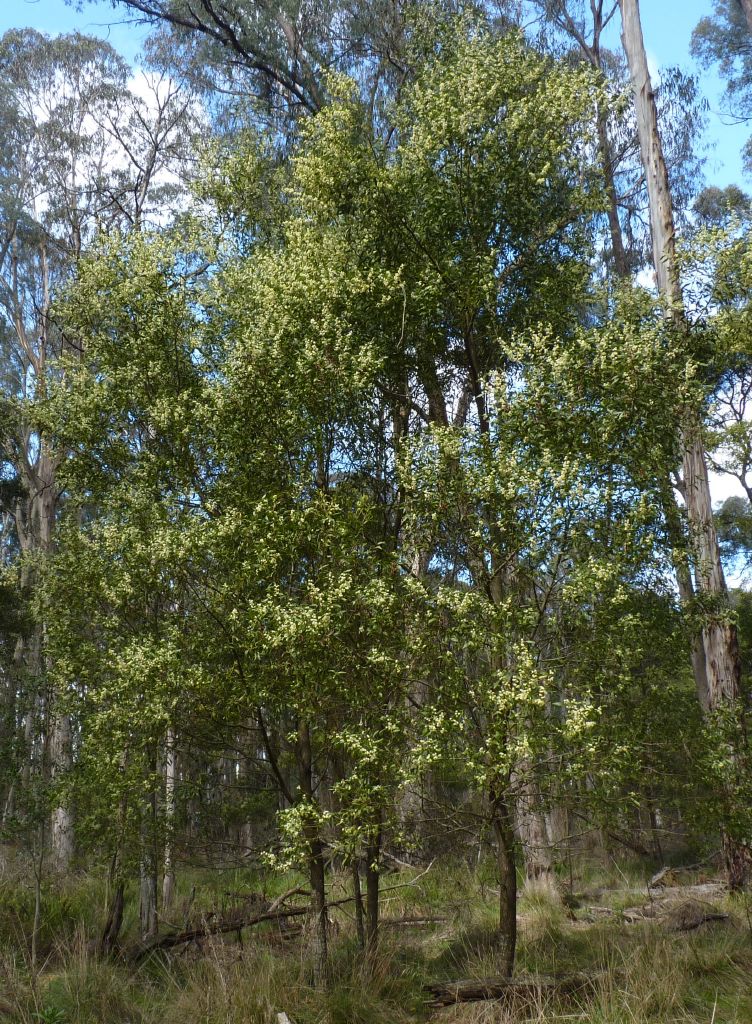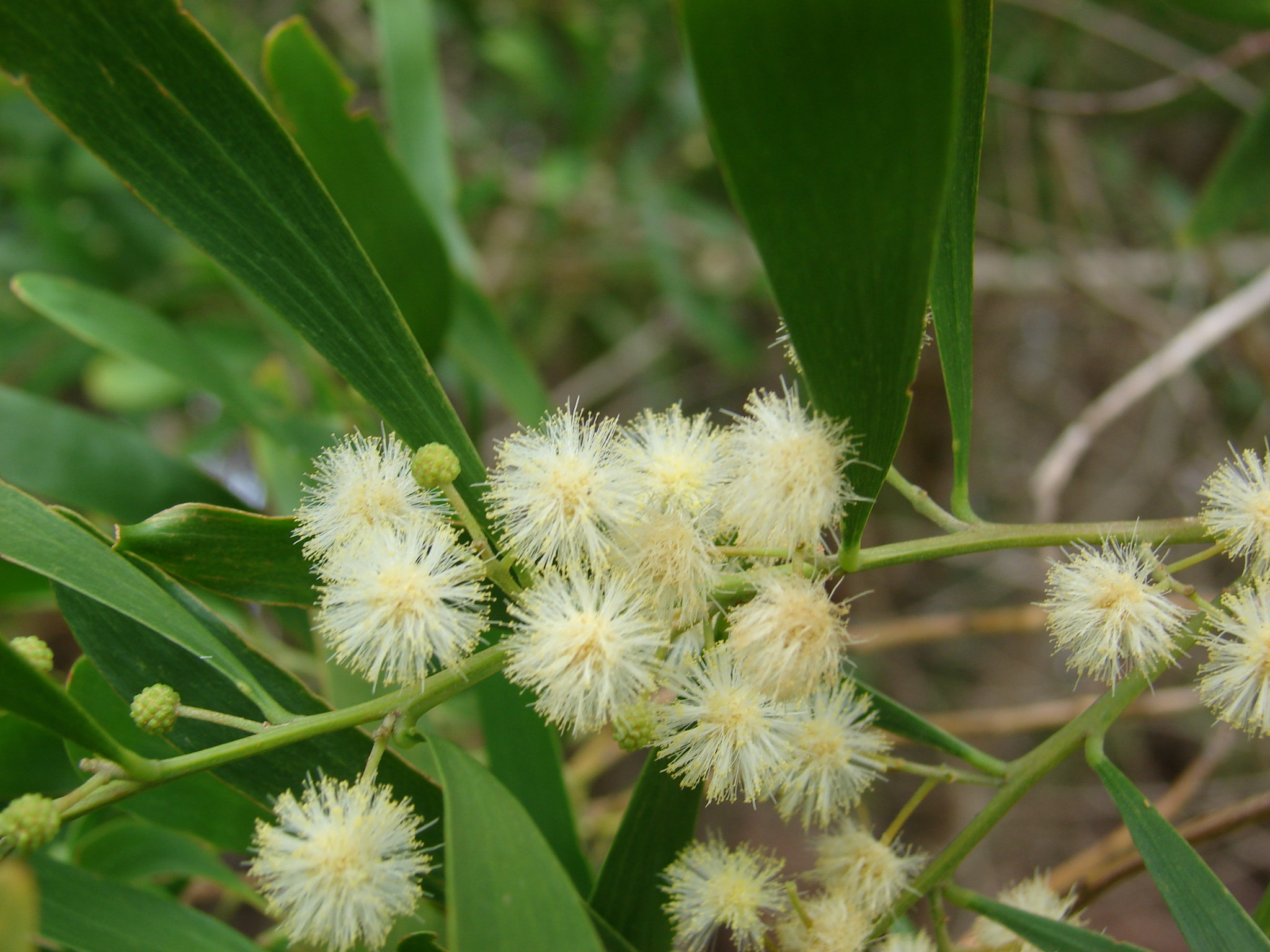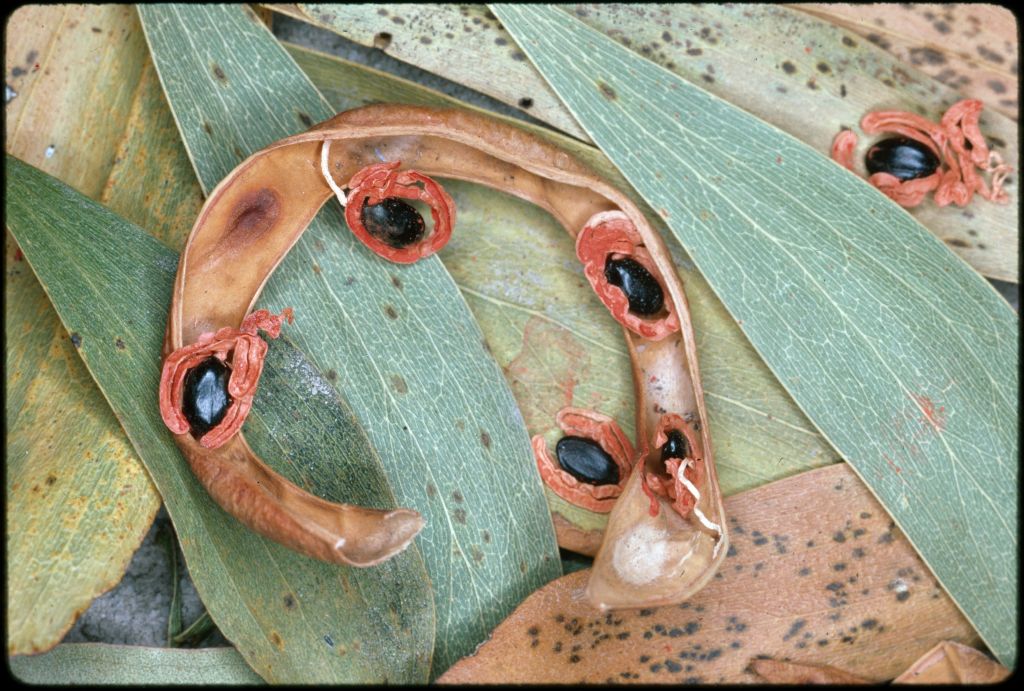Small to large tree with a variable height of 3 - 45 m and has a bole that is approximately 150 cm in diameter. It has deeply fissured, dark-grey to black coloured bark that appears quite scaly on older trees.
Leaves
Inclined to ascending, narrowly rounded, lance-shaped, straight to slightly curved. 3-5 raised main veins with numerous secondary veins.
Flowers
Pale yellow/golden to white clusters of 2 - 8 that flowers July – December. In Victoria, it flowers in August - October.
Fruits/Seeds
Seed pods strongly curved, twisted or coiled and 4 - 12 cm long, usually straight-sided to slightily constricted between seeds. Seeds longitudinal, twice-encircled by an orange to red funicle (elongated fleshy structure that supports the seed).
Field Guide
Improve your identification skills. Download your Blackwood field guide here!





